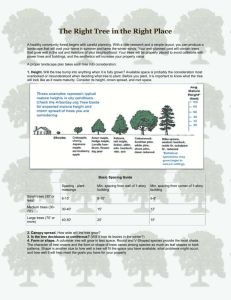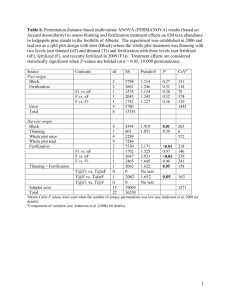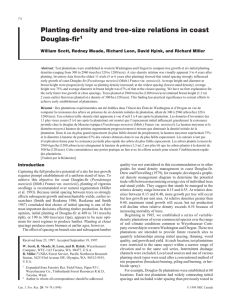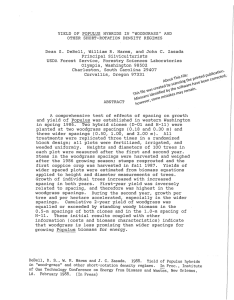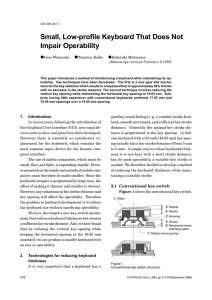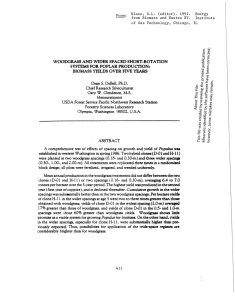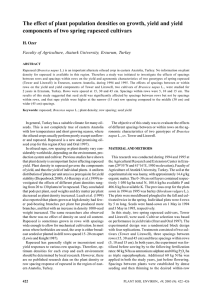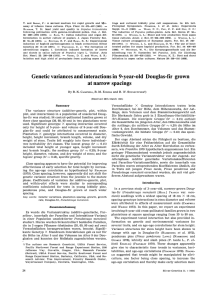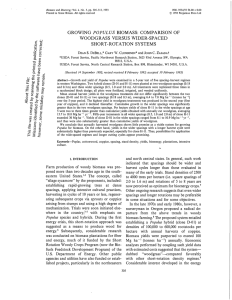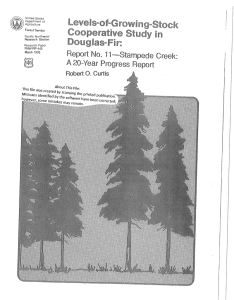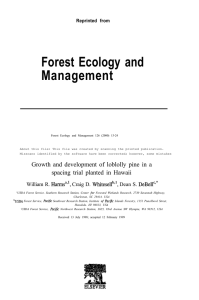Document 12787362
advertisement
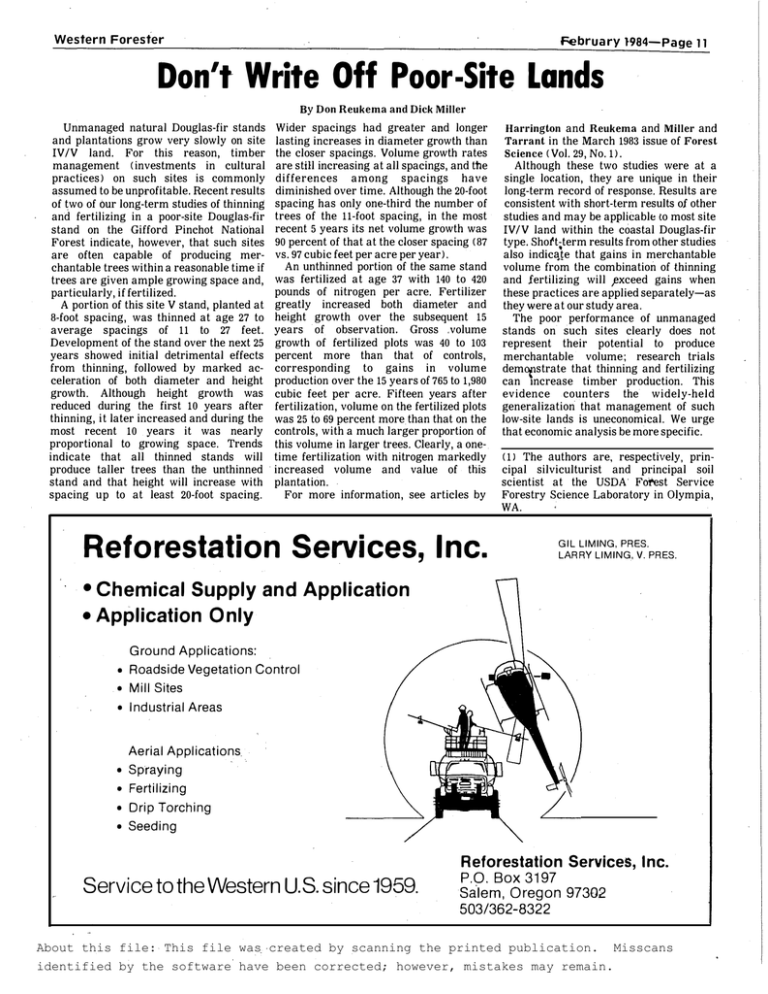
Western Forester February l984-Page 11 Don't Write Off Poor-Site Lands By Don Reukema and Dick Miller Unmanaged natural Douglas-fir stands Wider spacings had greater and longer and plantations grow very slowly on site lasting increases in diameter growth than the closer spacings. Volume growth rates are still increasing at all spacings, and the IV IV land. For management this reason, (investments in timber cultural practices) on such sites is commonly assumed to be unprofitable.Recent results of two of our long-term studies of thinning and fertilizing in a poor-site Douglas-fir stand on the Gifford Pinchot National Forest indicate, however, that such sites are often capable of producing mer­ chantable trees within a reasonable time if trees are given ample growing space and, particularly, if fertilized. A portion of this site V stand, planted at Harrington and Reukema and Miller and Tarrant in the March 1983 issue of Forest Science (Vol.29, No.1). Although these two studies were at a single location, they are unique in their differences among spacings have diminished over time. Although the 20-foot long-term record of response. Results are spacing has only one-third the number of trees of the 11-foot spacing, in the most studies and may be applicable to most site consistent with short-term results of other recent 5 years its net volume growth was 90 percent of that at the closer spacing (87 IVIV land within the coastal Douglas-fir type. Shoft;term results from other studies vs.97 cubic feet per acre per year). An unthinned portion of the same stand volume from the combination of thinning also indic te that gains in merchantable was fertilized at age 37 with 140 to 420 pounds of nitrogen per acre. Fertilizer and fertilizing will ,exceed gains when these practices are applied separately-as greatly increased both diameter and 8-foot spacing, was thinned at age 27 to height growth over the subsequent 15 average spacings of 11 to 27 feet. years of observation. Gross .volume Development of the stand over the next 25 growth of fertilized plots was 40 to 103 years showed initial detrimental effects percent more than that of controls, from thinning, followed by marked ac­ celeration of both diameter and height growth. Although height growth was reduced during the first 10 years after thinning, it later increased and during the most recent 10 proportional to indicate that was nearly growing space. years Trends all it thinned stands will they were at our study area. The poor performance of unmanaged stands on such sites clearly does not represent their potential to produce cubic feet per acre. Fifteen years after merchantable volume; research trials demoestrate that thinning and fertilizing can mcrease timber production. This evidence counters the widely-held fertilization, volume on the fertilized plots was 25 to 69 percent more than that on the controls, with a much larger proportion of low-site lands is uneconomical. We urge that economic analysis be more specific. corresponding to gains in volume production over the 15 years of 765 to 1,980 generalization that management of such this volume in larger trees. Clearly, a one­ produce taller trees than the unthinned time fertilization with nitrogen markedly increased volume and value of this (1 J The authors are, respectively, prin­ cipal silviculturist and principal soil stand and that height will increase with plantation. scientist at the USDA' Fotest Service Forestry Science Laboratory in Olympia, spacing up to at least 20-foot spacing. For more information, see articles by WA. Reforestation Services, Inc. • Chemical Supply and Application • Application Only GIL LIMING, PRES. LARRY LIMING, V. PRES. Ground Applications: • Roadside Vegetation Control • Mill Sites • Industrial Areas Aerial Applications • Spraying • Fertilizing • Drip Torching • Seeding Reforestation Services, Inc. Service to the Western U.S. since 1959. P.O. Box 3197 . Sa lem, Oregon 97302 503/362-8322 About this file: This file was created by scanning the printed publication. Misscans identified by the software have been corrected; however, mistakes may remain.
